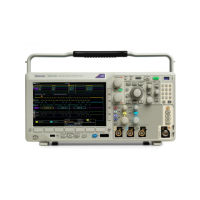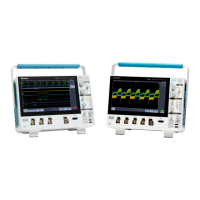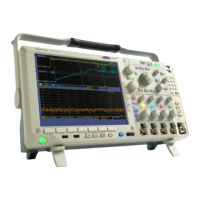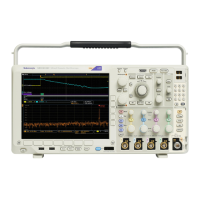Theory of Operation
This chapter describes the electrical operation of the oscilloscope to the module
level. The block diagram shows the oscilloscope module interconnections. (See
Figure 1 on pa
ge 5.)
Power Supply
The Pow er S
upply board converts AC line voltage to +12 V to pow er for all
internal circuits.
I/O Board
The I/O board contains USB ports, an Ethernet port (LAN), a VGA Video port, an
AUX OUT BNC connector, and the AFG generator output connector.
Main Board, Mezzanine Board, and Analog Board
The Main and Analog boards contain the following functions:
Acquisition System
The Ac
quisition system begins with the analog signal path and ends with a
digitized signal in memory. The signal enters a channel input, and then passes
through an attenuator and preamplifier. The analog signal from each preamplifier
goes through a digitizer, a nd then into acquisition mem ory. The analog signal
from each preamplifier is also distributed to a trigger circuit.
All of the inputs (including RF) are routed to the Analog board. The analog
channels are amplified and attenuated through the front-end circuitry, and are
output to the Main board. The RF channel is the same except that the RF input
si
gnal is routed through a shared connection with analog CH4. The analog board
has a controller that is used as an I/O controller for the front-end (Analog board).
Trigger System
The Trigger system digitizes the analog signals from the preamplifiers and
r
outes the digitized signal to the Trigger ASIC. Advanced trigger functions are
enabled only when the appropriate application modules and supporting software
are installed.
Display System
The D isplay system combines live waveform data from a cquisition memory with
menus and text, and stores this informationindisplaymemory.Itthenusesthis
data to refresh the WVGA display module (LCD).
MDO3000 Series Mixed Domain O scilloscopes Service Manual 3

